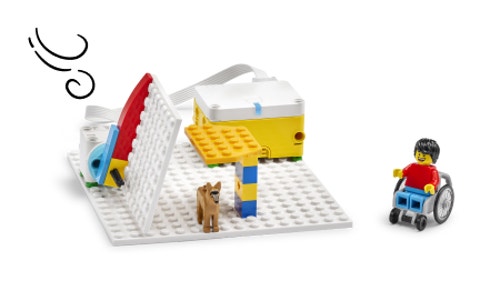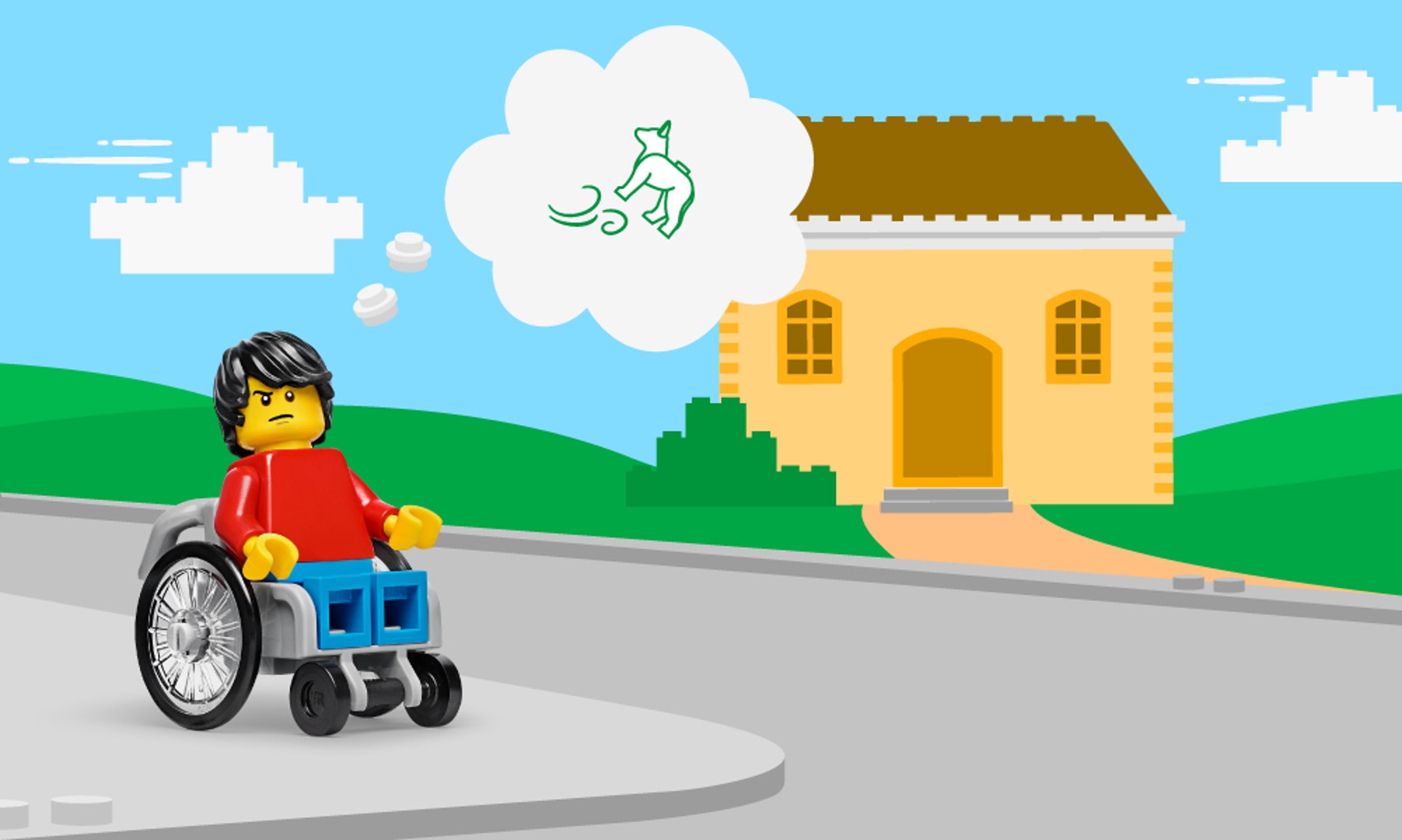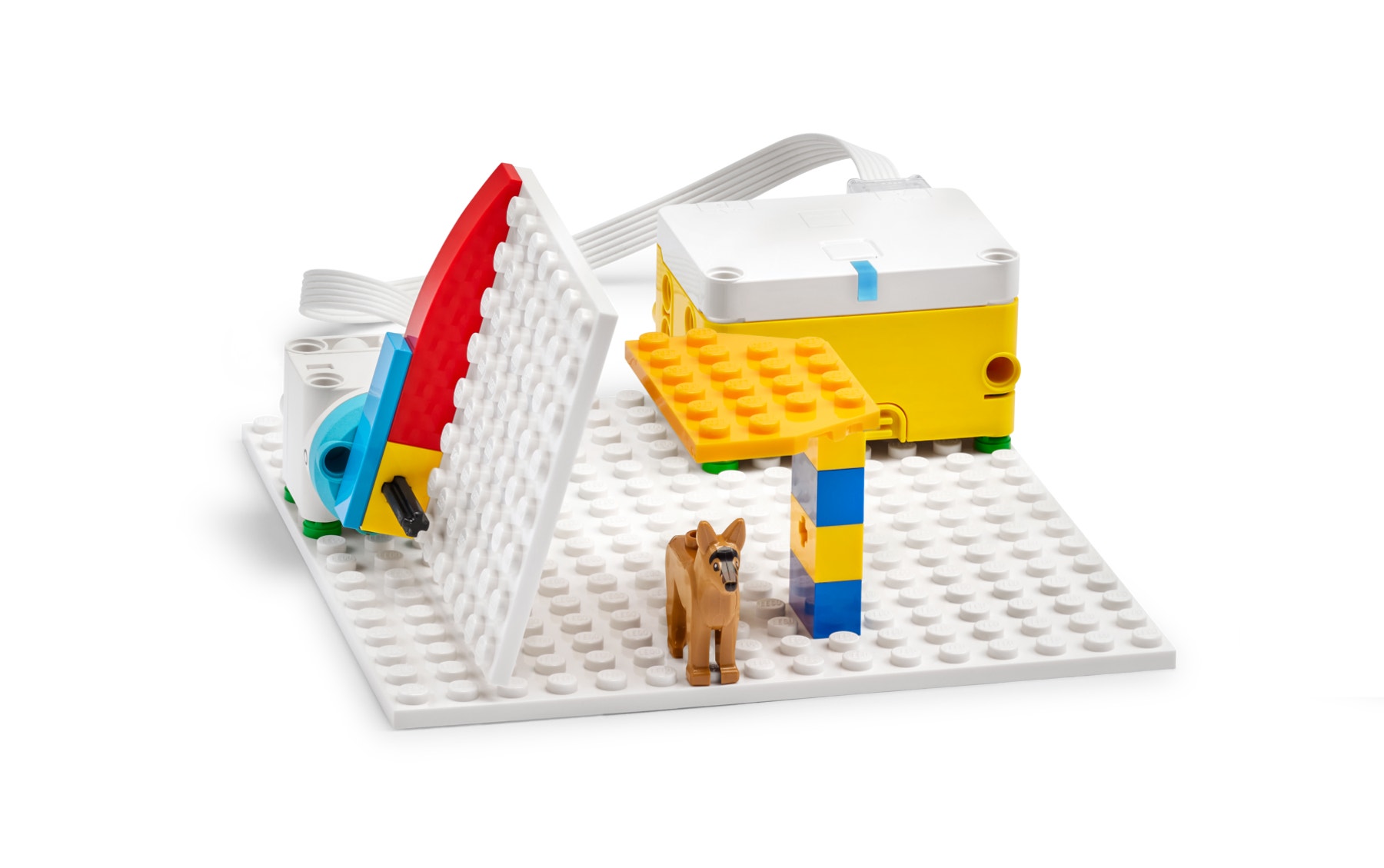Preparing for the Weather
Daniel learned that strong storms can damage pet houses. Help him design a pet house that keeps animals safe even in storms.

Prepare
(NOTE: This lesson contains a Part A and a Part B. Both are important to access the full learning of the curriculum. If time is limited, review both parts to choose elements that meet your pupils’ needs.)
In this lesson, the key learning is in using a model to support a claim that their pet house design solves a specific problem. Pupils will design and build that pet house using the example images for inspiration. Encourage them to design and build their own idea for a pet house.
- Science Background - Preparing for the Weather: Solutions to weather-related structural hazards consider the different ways weather creates hazards:
- Wind speed and direction, as well as shape, all affect a structures stability. Secure connections help structures withstand high winds, as does placing the structure behind something to redirect the wind (e.g., a row of trees).
- Accumulated snow is very heavy and can be unevenly distributed, which can cause roof collapse. Extra bracing adds strength; slanting allows snow to slide off.
- Flood damage can be reduced by elevating structures, using materials that can get wet, and sloping the land to drain the water away.
- Thunderstorms may contain lightning, which can damage structures directly or strike trees that then fall on the structure.
- Build Prior Knowledge - Preparing for the Weather: Using your core science materials, share information, images and definitions.
- Weather-related hazards include damage from high winds, flooding, lightning or snow.
- Where and how buildings are constructed and placed on the land can reduce the impact of storm damage.
- A claim answers a question about a problem and is supported by an argument that uses evidence and reasoning to say why a solution will respond to the problem. Evidence may include reasons, facts and logical cause-effect relationships (heavy rains cause flooding; lightning causes fires).
- Key vocabulary: hazard, claim, evidence
- Building and Programming Experience: Review the suggestions in the Unit Plan. For this lesson, you may also want to
- Reinforce with the Gyro Sensor and Light tutorials in the SPIKE App Start menu.
- Use the Sensor, Sound and Light Blocks sections of the Help>Word Blocks menu in the SPIKE app to provide more support on using and programming the Gyro Sensor, Light Matrix and sound options in different ways to simulate storm conditions.
- Use the Hovering Helicopter lesson to build experience using the tilt sensor.
PART A (45 minutes)
Engage
(Whole Class, 10 minutes)

Introduce the story’s main character(s) and the first challenge: Daniel learned that strong storms can damage pet houses. Help him design a pet house that keeps animals safe in storms.
THINK – Facilitate a brief discussion about the lesson topic(s), using the story picture if you wish.
- What are some hazards that weather like storms can cause? (Floods, heavy snow, high winds, lightning, tornadoes)
- How do people design buildings to reduce these hazards? (Possible answers include putting structures on stilts above flood waters using materials that can stay wet, building roofs strong enough to hold heavy snow and slanting them so the snow slides off, avoiding large flat surfaces that can get blown over, using plants to deflect the wind, adding lightning rods and building storm cellars for tornadoes.)
- Choose one kind of storm hazard to design and build a model pet house for.
Distribute a SPIKE Essential Set and a device to each group.
Explore
(Small Groups, 25 minutes)
As pupils work, consider sharing the examples below as support for building or programming. Clarify that they show a pet house with a motorised windbreak. Pupils’ models should show their chosen storm damage and design idea to protect against it.
Have pupils:
- Begin to BUILD and PROGRAM a pet house for Daniel that includes one design feature to protect against their chosen storm hazard, using the provided base model and program for inspiration if they wish.
Facilitate brainstorming about ways to program storm conditions and models to keep pets safe during a storm, such as how to use the light matrix and thunderstorm sound effect to simulate thunder and lightning, use a tilt sensor to detect if the house is tipping, or add a motorised windbreak like the one in the example.


Explain
(Whole Class, 10 minutes)
Gather pupils for sharing.
Have each group use their progress model to demonstrate and explain:
- What storm hazard problems (with evidence) their design addresses.
- How (with evidence) their design reduces the impact of the hazard.
- Their reasons (evidence) for choosing this design to solve the problem.
- What their program does.
Elicit sharing about pupils’ work in progress and encourage pupils to use inspiration from shared ideas.
Have pupils keep their partially completed models intact for use in Part B, where they will Build, Program and Explain further. Alternatively, allow additional time for rebuilding.
PART B (45 minutes)
Explain
(Whole Class, 10 minutes)
- Repeat the steps from Part A – Explain to support additional sharing, brainstorming and inspiration for continued model building and programming.
Elaborate
(Whole Class, 25 minutes)
Have pupils:
- (10 min) Continue to BUILD and PROGRAM, using inspiration from sharing during Explain. For example, they could add and program additional sensors to improve their design.
- (10 min) Use their completed models to make a claim about how their design will protect pets, adding or clarifying any evidence and reasons from their progress explanation.
(5 min) Invite pupils to share knowledge, ideas or skills that:
- Helped them complete the challenge.
- They learned while building.
Have pupils clean up the sets and work areas.
Evaluate
(Whole Class, 10 minutes)
- Ask guiding questions to elicit pupils’ thinking and their decisions while developing ideas, building and programming.
Observation Checklist
- Review the learning objectives (Teacher Support box).
- Use the checklist to observe pupils’ progress:
- Their model has a feature intended to reduce the impact of a specific weather-related hazard.
- They make a claim about a design that will keep a pet safe from the hazard.
- They support their claim with evidence about the problems the hazard causes (e.g., winter storms leave heavy snow on the pet house roof, which could make it collapse) and reasons why their design solves that problem for the pet house (e.g., the slanted roof allows heavy snow to slide off so the roof doesn’t break.)
Self-Assessment
Have each pupil choose the brick that they feel best represents their performance。
- Blue brick: I think I can follow instructions to create a program.
- Yellow brick: I can follow instructions to create a program.
- Green brick: I can follow instructions to create a program, and I can help a friend do it too.
Peer Feedback
In their small groups, have your pupils discuss their experiences working together.
Encourage them to use statements like these:
- I liked it when you…
- I’d like to hear more about how you…
Differentiation
Simplify this lesson by:
- Limiting the possible storm-related hazards to be addressed to one or two options, such as the windbreak suggested by the provided base model/program. Ask pupils yes/no questions to elicit their explanation.
Increase the difficulty by: - Having pupils address two or more weather-related hazards in their designs.
Cross-curricular Learning
Have pupils research how buildings are designed to reduce the impact of weather-related hazards. Invite to share research through a preferred method, e.g., in writing, orally or by video.
If facilitated, this will extend beyond the 45-minute lesson.
Teacher Support
Pupils will:
- Build a model of a pet house designed to reduce the impact of a weather-related hazard.
- Make a claim about how and why their design reduces the impact of the hazard to keep a pet safe.
- Support the claim with evidence about the problems the hazard causes and reasons why the design addresses these problems.
(one for every two pupils)
- LEGO® Education SPIKE™ Essential Set
- Device with the LEGO Education SPIKE App installed
Year 1 Seasonal Changes
Pupils should be taught to observe and describe weather associated with the seasons.
Key Stage 1 Geography
Pupils should be taught to identify seasonal and daily weather patterns in the United Kingdom.
Year 1 English Cross-curricular Learning
Spoken language




